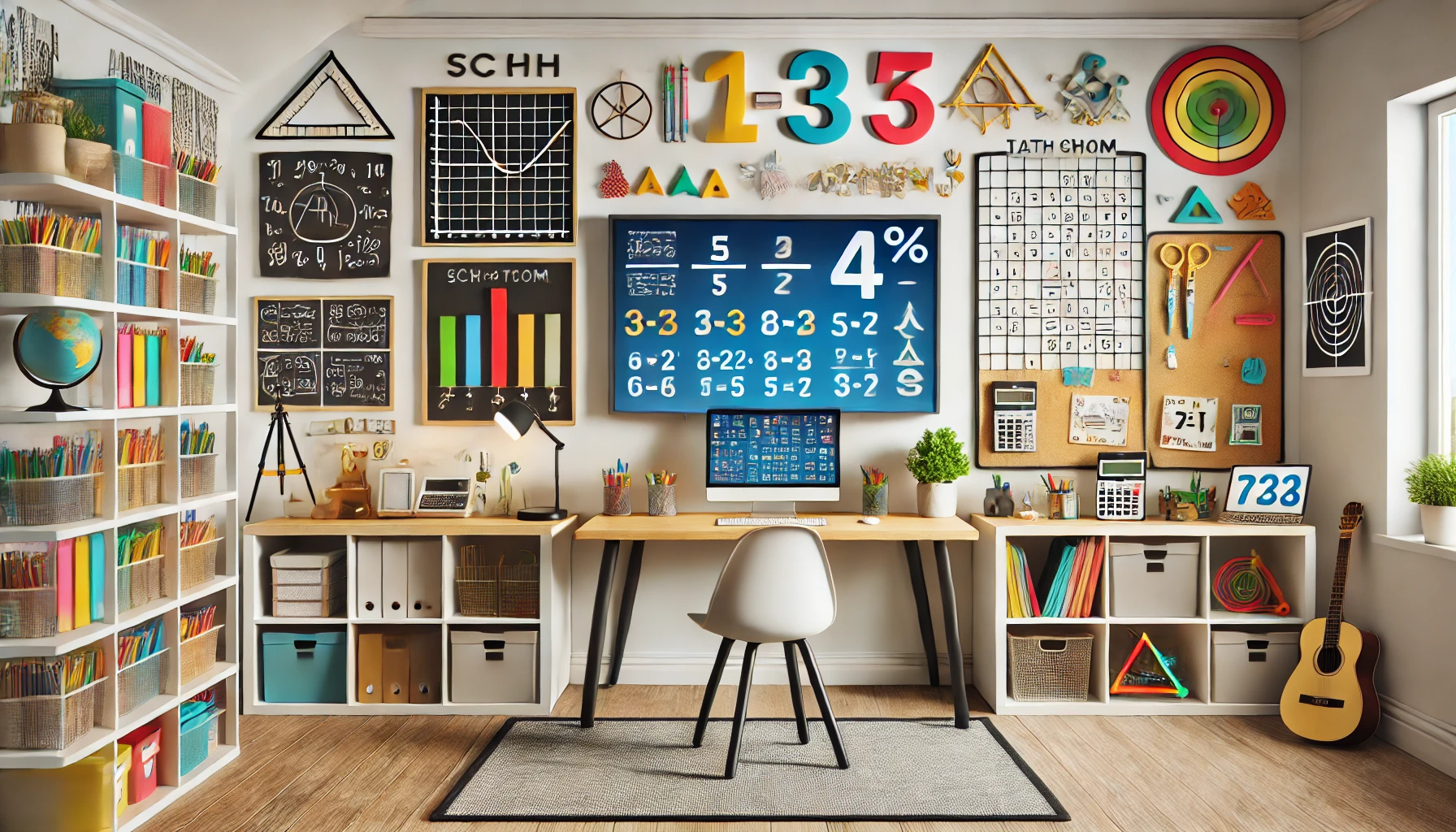A successful math classroom is more than just a space for teaching equations; it’s a hub for inspiring students to explore and excel in mathematics. A zet up mat classroom focuses on creating an environment that blends organization, technology, and innovation to enhance the learning experience.
This guide offers a step-by-step approach to creating a zet up mat class room, ensuring students not only learn but also enjoy the process of mathematical discovery.
Why Is a Zet Up Mat Classroom Important?
A well-organized zet up mat classroom significantly influences how students perceive math. By structuring the environment to be interactive and inclusive, teachers can:
- Boost Engagement: Students stay motivated and focused.
- Encourage Collaboration: Group work fosters problem-solving and communication.
- Improve Understanding: Visual and hands-on tools simplify complex concepts.
Step 1: Setting Clear Objectives
Define Your Vision
Before setting up your classroom, outline your teaching goals. Ask yourself:
- What teaching methods will you prioritize?
- How will you measure success?
- What resources are essential for enhancing the learning experience?
Clearly defined objectives will shape the design and function of your zet up mat classroom.
Step 2: Structuring the Physical Space
A well-thought-out physical setup can dramatically impact learning outcomes.
a. Classroom Layout
Choose a layout that aligns with your teaching style:
- Rows and Columns: Ideal for lectures and note-taking.
- Clustered Desks: Encourages group collaboration.
- U-Shaped Setup: Facilitates discussions and better teacher-student interaction.
b. Essential Equipment
Ensure your zet up mat class room has:
- Math Manipulatives: Tools like fraction tiles, geometry kits, and abacuses.
- Interactive Displays: Smartboards and projectors for visual learning.
- Storage Units: Organized bins for books, calculators, and other supplies.
c. Create Functional Zones
Divide the classroom into specific areas for better functionality:
- Teaching Zone: Whiteboard, projector, and teaching tools.
- Resource Zone: Math textbooks, manipulatives, and reference charts.
- Quiet Zone: A space for individual learning and reflection.
Step 3: Incorporating Technology
Technology plays a vital role in a modern zet up mat classroom.
a. Smartboards and Interactive Tools
- Use smartboards for dynamic lessons that include videos, graphs, and real-time problem-solving.
- Incorporate apps like Desmos or GeoGebra for interactive geometry and algebra lessons.
b. Online Platforms
For blended learning, utilize platforms like Google Classroom to share assignments and resources digitally.
c. Devices for Students
Provide access to tablets or laptops where students can practice problems, watch tutorials, or engage in interactive activities.
Step 4: Designing a Virtual Zet Up Mat Classroom
Creating a virtual zet up mat classroom for educators teaching online requires a strategic approach.
a. Choose the Right Platform
Platforms like Zoom or Microsoft Teams offer video conferencing, file sharing, and whiteboard features, making them ideal for virtual math classrooms.
b. Organize Digital Resources
- Use folders and labels to categorize topics like Algebra, Geometry, and Calculus.
- Provide quick links to math games, apps, and reference sites.
c. Set Clear Guidelines
Establish rules for virtual participation:
- Mute microphones unless speaking.
- Use video for better engagement.
- Participate actively in polls, quizzes, and group discussions.
Step 5: Personalizing the Classroom
Adding a personal touch to your zet up mat classroom can make students feel welcome and engaged.
a. Decor and Displays
- Use posters showcasing famous mathematicians and inspirational quotes.
- Create a “Math Wall” featuring student projects and achievements.
- Incorporate bright colors and visual aids that resonate with students.
b. Involving Students
Let students contribute to classroom aesthetics by designing bulletin boards or creating charts of math formulas.
Step 6: Curriculum Planning
A well-structured curriculum ensures that every student progresses steadily.
a. Map Out the Year
Divide the academic year into units:
- Months 1-3: Basics of arithmetic and number systems.
- Months 4-6: Introduction to algebra and geometry.
- Months 7-9: Advanced topics like calculus and trigonometry.
b. Differentiated Instruction
Tailor lessons to accommodate diverse learning styles:
- Use visual aids for visual learners.
- Incorporate hands-on activities for kinesthetic learners.
- Focus on detailed explanations for auditory learners.
Step 7: Engaging Teaching Strategies
Keeping students engaged is key to the success of a zet up mat classroom.
a. Active Learning
Encourage active participation through:
- Group discussions.
- Problem-solving activities.
- Peer teaching opportunities.
b. Gamification
Make learning fun by incorporating games like:
- Math bingo for quick problem-solving.
- Escape rooms with math puzzles.
- Interactive quizzes using tools like Kahoot or Quizizz.
c. Real-World Applications
Demonstrate the relevance of math by connecting lessons to real-life scenarios, such as budgeting, sports statistics, or architectural design.
Step 8: Creating a Positive Learning Environment
A supportive environment encourages students to explore and enjoy math.
a. Build Relationships
Foster open communication and show genuine interest in students’ progress.
b. Promote a Growth Mindset
Teach students that mistakes are part of learning and encourage perseverance.
c. Celebrate Successes
Recognize student achievements with certificates, shoutouts, or a “Math Star of the Month” program.
Step 9: Continuous Assessment and Feedback
a. Diverse Assessment Methods
Use a mix of tests, quizzes, and group projects to evaluate understanding.
b. Constructive Feedback
Provide specific, actionable feedback to help students improve and build confidence.
Step 10: Evolving Your Zet Up Mat Classroom
Education is constantly evolving, and so should your classroom.
a. Professional Development
Attend workshops or online courses to stay updated with the latest teaching strategies.
b. Gather Feedback
Regularly ask students for feedback on what works and what can be improved.
Conclusion
Creating a zet up mat classroom is a rewarding endeavor that transforms the way students perceive and engage with mathematics. By focusing on organization, technology, and personalized teaching strategies, educators can build a dynamic environment where students thrive. Whether in a physical or virtual space, a well-designed math classroom sets the stage for success and fosters a lifelong appreciation for math.
Exploring Jank Botejo From Folklore to Modern Interpretations



